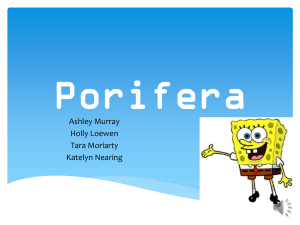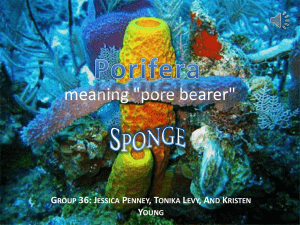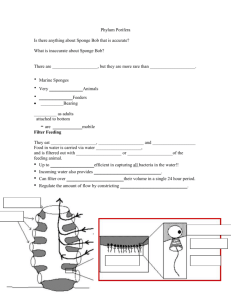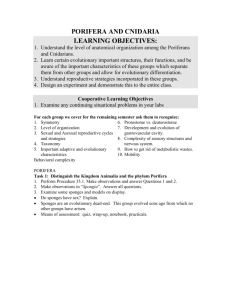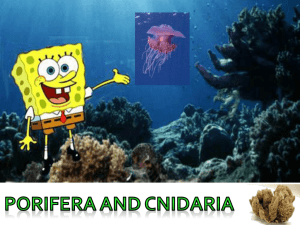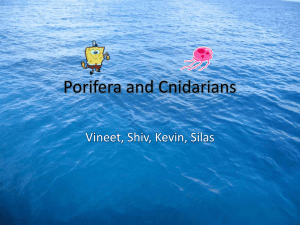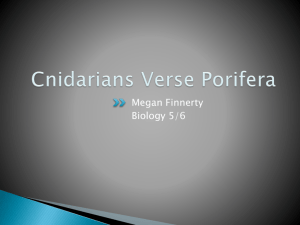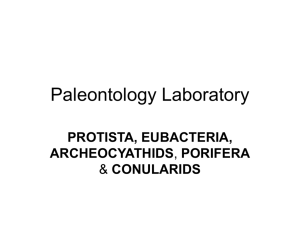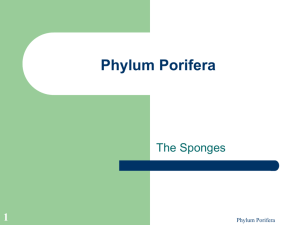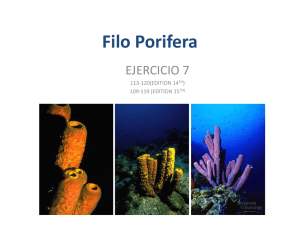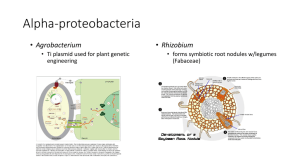Phylum Porifera
advertisement
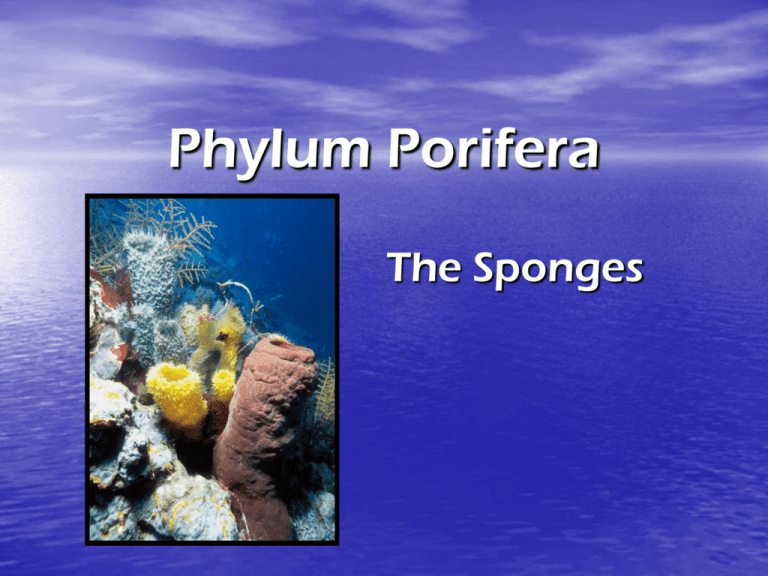
Phylum Porifera The Sponges Porifera•Pori= “Pore” •Fera= “Bearer” Body of Pores Porifera Movement • Larva stage is motile (able to move)- flagellum • Adults are sessile (attached) Porifera Support • Spicules- hard mineral • structures intertwined throughout the body Spongin- tough, protein-like fibers Porifera Protection • Spicules- spiny (deter predators) • Bad taste- produce chemicals Porifera Nutrition • Feeding by flagellated collar cells • Amebocytes digest particles of food • Filter feeders- straining food particles from water (teacup size sponge can remove food from 5,000 liters of water per day about a truckload of quart bottles) Porifera Respiration • No Structure • Gas exchange by diffusion Porifera Circulation •Water in through incurrent pore •Water exits through excurrent pore or osculum Porifera Excretion • No structures • Amebocyte cells transport wastes to sponge’s surface for removal Porifera Reproduction • Sexual • Asexualregeneration, budding Phylum Cnidaria • Anemones, Corals, Jellyfish, Hydras, Movement-Tentacles Support-Two Layers w/ jellylike material between Protection- Nematocystsstinging cells in tentacles Box Jellyfish Among the most deadly venoms in the world Nutrition-tentacles catch and gastrovascular cavity digests

